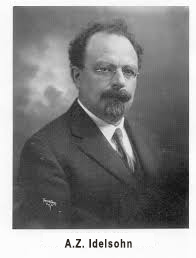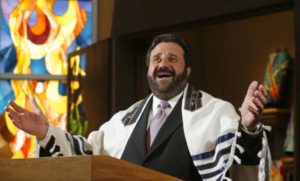What is Jewish music? At its essence, Jewish music, like music of any identified culture, reflects Jewish values and experiences.
For example, an obvious, partial answer to the question “What is Jewish music?” is music of the synagogue, the schul: cantorial music, liturgical music, and cantillation. Melodies such as “Halleluyah,” “Heine Ma Tov,” “V’Taher Lebeinu,” “Yis Ma Chu,” “L’Cha Dodi,” “Avinu Malkeinu,” and “Kol Nidre.”
Then there are melodies sung and played at various Jewish celebrations—Chanukah, Passover, and Purim—in the synagogue and in Jewish homes, such as “Moaz Tsur,” “Chanukah, O, Chanukah,” “Dreidel, Dreidel, Dreidel,” “Sevivon,” “Mishenichnas Adar Marbim Be-Simecha,” “Layehudim Haitah Orah Ve-Simechah, Ve-Sasson, Ve-Yakar,” “Adon Olam,” “Mah Nishtanah Halaylah Haze,” and “Eliyahu Hanavi.”
And there are countless folk melodies, for example “Ata Hu Hashem,” “Lahadam,” and “Erev Shel Shoshanim.” This catalog of Jewish music must also include Israel’s national anthem “Hatikva” and the most covered Jewish melody of all “Hava Nagila.”
There is also Klezmer: a musical tradition of the Ashkenazi Jews of Eastern Europe. Played by professional musicians called klezmorim in ensembles known as kapelye, the  genre originally consisted largely of dance tunes and instrumental display pieces for weddings and other celebrations. In the United States the genre evolved considerably as Yiddish-speaking Jewish immigrants from Eastern Europe, who arrived between 1880 and 1924, came into contact with American jazz.
genre originally consisted largely of dance tunes and instrumental display pieces for weddings and other celebrations. In the United States the genre evolved considerably as Yiddish-speaking Jewish immigrants from Eastern Europe, who arrived between 1880 and 1924, came into contact with American jazz.
And there is nigunim: A nigun (singular of nigunim) (Hebrew: meaning “tune” or “melody”) is a form of Jewish religious song or tune sung by groups. It is vocal music, often with repetitive sounds such as “Bim-Bim-Bam”, “Lai-Lai-Lai”, “Yai-Yai-Yai” or “” Ai-Ai-Ai” instead of formal lyrics. Nigunim are especially central to worship in Hasidic Judaism.
In the 20th and 21st centuries the advent of Jewish music and music based on Jewish culture and themes extended beyond the synagogue and Jewish home, as in Broadway musicals, such as:
 Amerike—The Golden Land (1982), Cabaret (1966), Falsettos (1992), Fiddler on the Roof (1964), I Can Get It For You Wholesale (1962), Milk and Honey (1961), Ragtime (1998), The Immigrant (2004), The People in the Picture (2011), The Zulu and the Zayda (1965), and War Paint (2017).
Amerike—The Golden Land (1982), Cabaret (1966), Falsettos (1992), Fiddler on the Roof (1964), I Can Get It For You Wholesale (1962), Milk and Honey (1961), Ragtime (1998), The Immigrant (2004), The People in the Picture (2011), The Zulu and the Zayda (1965), and War Paint (2017).
Films with Jewish “sounding” music and Jewish culture and themes are just as numerous, and include most famously “The Jazz Singer” (1927), “The 10 Commandments” (1956), “Ben Hur” (1959), “Exodus” (1960), “Funny Girl” (1968), “Oliver” (1968), “Fiddler on the Roof” (1968), “Yentl” (1983), “Schindler’s List” (1993), “Eight Crazy Nights” (2002), “Munich” (2005), and “Defiance” (2008).
In the genre of jazz, the inventory of “jazz Jews” inspired British author and radio show host Mike Gerber to pen a 656-page volume titled Jazz Jews (published in 2009). Some of these Jews wrote a treasure trove of Yiddish music that found its way into the popular culture, such as Sholem Secunda’s “Bay mir bistu sheyn”
The list of Jewish composers and performers who contributed to the “Great American Songbook” is very long and includes such notables as Aaron Copland, George Gershwin, Irving Berlin, Leonard Bernstein, Neil Sedaka, Carole King, and Bob Dylan. Berlin, who wrote close to 2,000  tunes, famously wrote the most popular Christmas song ever, “I’m Dreaming of A White Christmas.” And Neil Sedaka, who wrote, among many others songs, “Stairway to Heaven” and “Breaking Up Is Hard To Do,” is aptly named. In Hebrew Sedaka means “righteousness” or more popularly “charity.”
tunes, famously wrote the most popular Christmas song ever, “I’m Dreaming of A White Christmas.” And Neil Sedaka, who wrote, among many others songs, “Stairway to Heaven” and “Breaking Up Is Hard To Do,” is aptly named. In Hebrew Sedaka means “righteousness” or more popularly “charity.”
Clearly, while Jewish music has its origins in religious observance in the schul and in the Jewish home and is a significant cultural glue that bounds the Jewish community in the diaspora, Jewish music as a reflection of Jewish culture and themes has spread globally thanks to information, communications, and transportation technologies in the 20th and 21st centuries..
So, what then is Jewish music in contemporaneous terms? Is it strictly the music of the synagogue, Jewish melodies sung in the home, or Israeli folksongs, et al? In the context of globalism these definitions, while correct, are too constrained. Can we not define Jewish music as music based on Jewish sounds, culture, and themes?
 We must now also define Jewish music in the current cultural context, which is: no culture is pure; all cultures are a mixture. And it has been this way for thousands of years. Cultures are influenced by other cultures. No less than the father of Jewish musicology A.Z. Idelsohn in his seminal work Jewish Music in Its Historical Development (1929) in the very first sentence of Chapter I “The Song of the Synagogue,” states: “In surveying the development of music in ancient Israel it is essential to consider the music of Israel’s ancient neighbors.” In other words, no culture, let alone musical culture stands alone. Outside influences have an impact.
We must now also define Jewish music in the current cultural context, which is: no culture is pure; all cultures are a mixture. And it has been this way for thousands of years. Cultures are influenced by other cultures. No less than the father of Jewish musicology A.Z. Idelsohn in his seminal work Jewish Music in Its Historical Development (1929) in the very first sentence of Chapter I “The Song of the Synagogue,” states: “In surveying the development of music in ancient Israel it is essential to consider the music of Israel’s ancient neighbors.” In other words, no culture, let alone musical culture stands alone. Outside influences have an impact.
For the Jews in the diaspora and even now in Israel, outside musical cultures must be taken into account. And the cultural flow goes both ways. Earlier I referenced “Hava Nagila,” the most covered Jewish melody ever. Quite apart from Harry Belafonte’s rendition, Machito, one of the progenitors of Latin-jazz in New York City, also covered this same melody. On a 1951 recording he called the tune “Mambo Holiday.” My own Heritage Ensemble Quintet has taken two dozen Hebraic melodies and morphed them into arrangements using various jazz, Afro-Caribbean, Brazilian, and classical genres.
All in all, Jewish music—while born in religious observance—has clearly evolved and incorporated the cultural diaspora into its musical catalog.
© Eugene Marlow 2019


